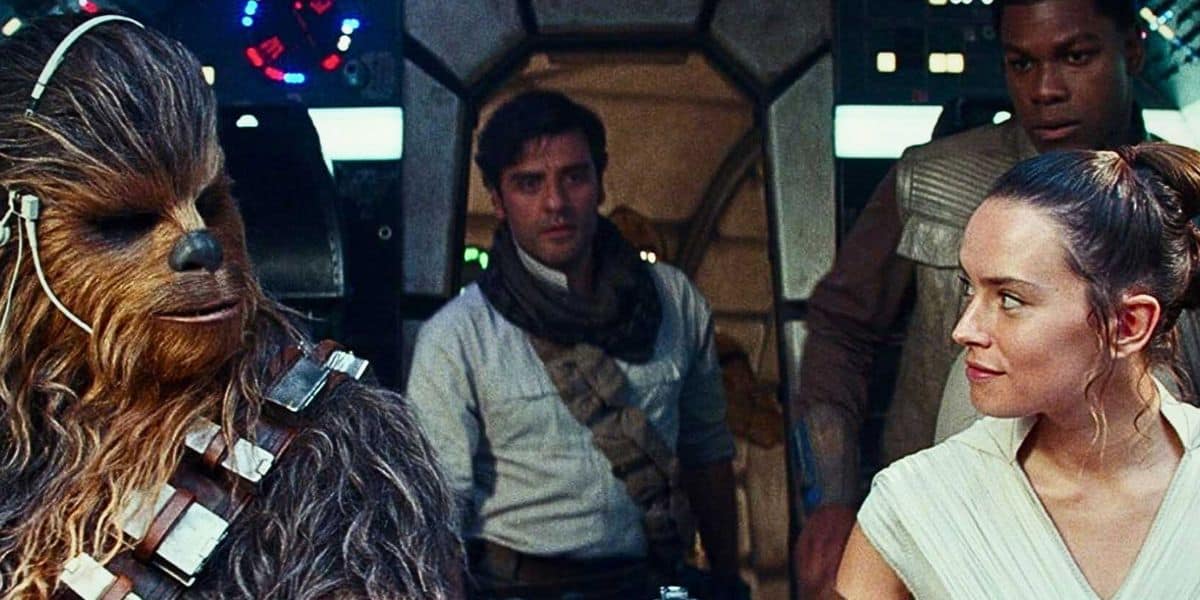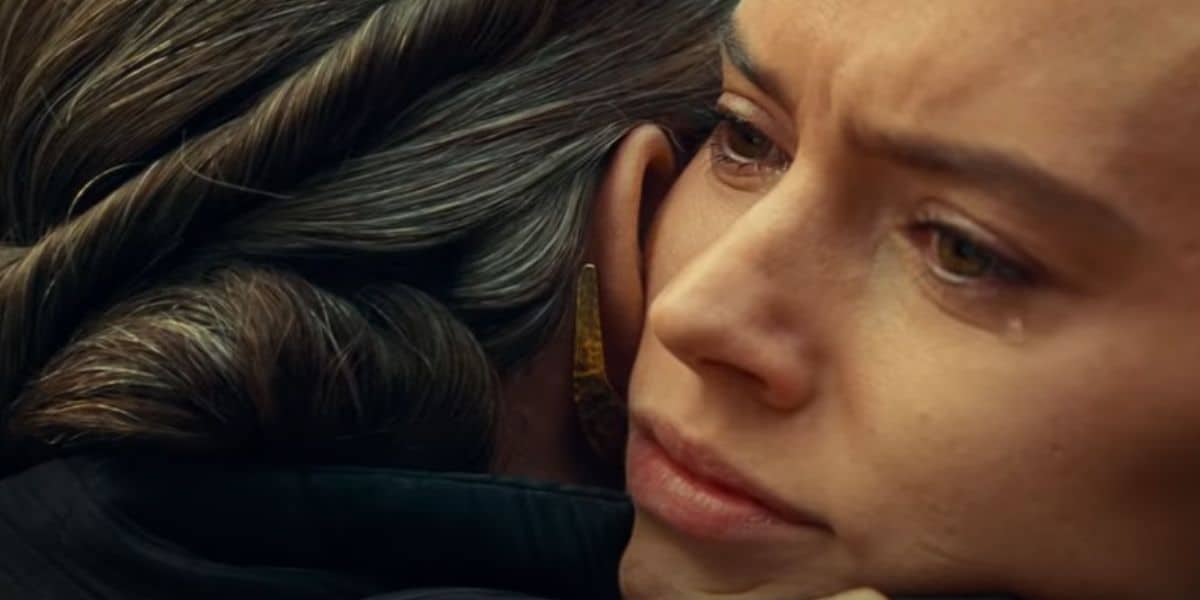The world’s leading science fiction franchise is altering its latest divisive trilogy, and has been ever since it dropped almost six years ago.

Star Wars is renowned for including stories within its greater cinematic narrative in order to tell new tales or detail events that are just too large for a blockbuster movie. It may feel like the Star Wars studio relies too much on this device, especially in light of The Walt Disney Company and Lucasfilm President Kathleen Kennedy’s first foray into new stories with the sequel trilogy, but an unspoken promise was seemingly made, and it may finally be coming true.
When director George Lucas released Star Wars (1977), later renamed Star Wars: Episode IV–A New Hope, he did not know that it would change the world. Now, over four decades later, characters like Luke Skywalker, Princess Leia, and Han Solo are household names, as are the actors who played them–Mark Hamill, Carrie Fisher, and Harrison Ford, respectively.

Related: “Creative Overhaul” Sees Luke Skywalker Actor Recast in ‘Star Wars’
In spite of such a dedicated fandom, the Star Wars community has dealt with many hits and misses over Lucasfilm’s leading franchise’s tenure in the pop culture lexicon. In recent years, after Lucas sold his studio to The Walt Disney Company, deep cracks have appeared in the galaxy far, far away’s ability to capture the attention of audiences in a positive light, largely due to the divisive nature of the Star Wars sequels.
What began with the billion-dollar smash, Star Wars: Episode VII–The Force Awakens (2015) from director J. J. Abrams, quickly became an intense arena of opinion and backlash. Rian Johnson’s Star Wars: Episode VIII–The Last Jedi (2017) essentially rewrote the galaxy’s narrative while Abrams’ attempt to “rescue” the franchise two years later with Star Wars: Episode IX–The Rise of Skywalker (2019) came with more questions and scratched heads than answers and solutions.

Nestled between the Star Wars prequels, the original trilogy, and the Star Wars sequel trilogy are numerous stories expanding on events and characters to add context to certain elements within the live-action films. From comic books to novels to classic animated shows like Star Wars: The Clone Wars and Dave Filoni’s Star Wars Rebels, Lucasfilm’s content output is certainly significant.
One 2022 story followed through on some Star Wars promises as Adam Christopher’s “Star Wars: Shadow of the Sith” (2022), from Del Rey, drastically altered the course of The Rise of Skywalker, allowing fans to view the polarizing sequel through a new lens.

The Rise of Skywalker introduced multiple new elements to the Skywalker Saga suddenly and without explanation. From the Sith planet Exegol to Emperor Palpatine, AKA Darth Sidious (Ian McDiarmid )’s survival and cloning operations, the Sith Eternal, Rey’s (Daisy Ridley) parents, and objects like Sith Wayfinders, The Rise of Skywalker became two hours of confusing plot points and poorly told storytelling.
However, “Shadow of the Sith”, which takes place 13 years prior to the events of The Force Awakens, is being well-received. In 2021, the announcement of the Jedi Knight Luke Skywalker and Lando Calrissian Star Wars novel promised to answer many of the questions above, and it seems Star Wars is following through on that promise. As ComicBook reported:

Through these stories, several key plot devices from The Rise of Skywalker are given a sense of backstory and history that was, arguably, lacking in the film itself. The relevance and nature of the Sith Wayfinder and Sith Dagger and expanded on, as is Exegol’s mythical nature. That Rey’s parents get some actual characterization here is welcome as well, providing a much more satisfying explanation for why they left Rey on Jakku (and why there seemed to be so much confusion about who they really were) than previously allowed.
It is interesting that while “Shadow of the Sith” is a prequel to the sequels, it ideally should be read after due to its content of Rey’s parentage and Exegol’s and Darth Vader’s former master’s existence–further adding to the reason why this book exists in the first place, but nonetheless making it an essential novel.

IGN had similar sentiments:
…rewatching The Rise of Skywalker is a bit more enjoyable after diving into Shadow of the Sith. It’s easier to accept the random reappearance of the Jedi’s enemies and a sudden reveal of their homeworld, as at least there’s some groundwork that makes these things feel established in canon. This can’t alter the fact that The Rise of Skywalker doesn’t function fully without this new addition to the story…
Years Later, Star Wars Continues to Change the Sequel Trilogy
More than five years after Star Wars: Episode IX–The Rise of Skywalker closed out the Skywalker saga in theaters, Lucasfilm has revisited its most divisive installment through new media—this time in the form of a five-issue Marvel comic book adaptation.

Related: Farewell! ‘Star Wars’ Leaving Skywalker Saga Behind, New Movies “In Movement All Along”
While J.J. Abrams’ final chapter in the sequel trilogy was packed with action and familiar faces, it drew criticism for its rushed pacing and narrative decisions. Since then, fans have been left speculating on what could have been, especially as updates on future theatrical projects, such as Daisy Ridley’s post-Skywalker film and Simon Kinberg’s new trilogy, remain scarce and uncertain.
Now, The Rise of Skywalker is getting a second life, not on the big screen, but on the page. Written by Jody Houser with art by Will Sliney, Marvel’s comic book adaptation does more than just retell the film—it adds never-before-seen material that provides greater depth and context to key moments.

Most notably, the final issue completely reimagines one of the movie’s most talked-about scenes: the “All the Jedi” moment. In the original film, Rey hears the voices of fallen Jedi like Qui-Gon Jinn (Liam Neeson), Ahsoka Tano (Ashley Eckstein), and Luke Skywalker (Mark Hamill) as she faces off against Palpatine. But in the comic, these legendary characters finally appear visually as Force ghosts, offering the kind of on-page closure many fans felt was missing from the movie’s climax.
This visual representation has significantly changed how the ending plays. Rather than leaving the Jedi’s support to the imagination, the comic brings these characters to life in a way that highlights the emotional weight of Rey’s final stand. Seeing them unified in battle—something the movie only implied—creates a more tangible legacy for the Jedi and reshapes the scene as a moment of true passing-the-torch.

With other expanded media like Charles Soule’s “The Legacy of Vader” and animated series like The Bad Batch continuing to flesh out the sequel era, Lucasfilm appears to be quietly–and continually–rewriting the narrative surrounding The Rise of Skywalker, one project at a time.
Have you read “Star Wars: Shadow of the Sith”? How do you feel about Lucasfilm continuing to change the sequel trilogy? Let Inside the Magic in the comments down below!
The post ‘Star Wars’ Follows Through on Promise, Pours Energy Into Righting Sequel Trilogy appeared first on Inside the Magic.

